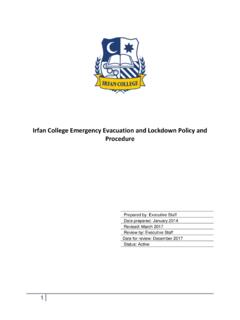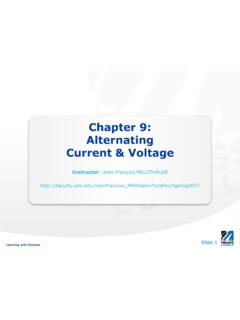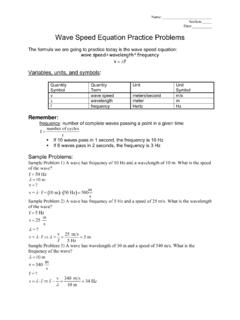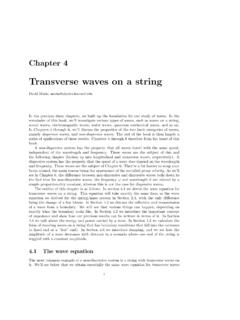Transcription of Dr. Steven Lin - The Five Stages of Sleep and Brain Wave ...
1 Dr Steven Lin The Functional Dentist The Five Stages of Sleep & Brain wave cycles Search Over an entire night your Brain needs to move through the various Stages of Sleep In recent years we ve seen a big increase in our understanding of the role that better Sleep plays in health. Sleep is a critical component of Brain health, yet many people don t really know what happens in the Brain during the Stages of Sleep . For a long time, it was thought the Brain was inactive during Sleep , but today, neuroscience has discovered that human Sleep is a far more complex process. The complex human Brain needs to replenish nightly, and Brain diseases like Alzheimer s and dementia are linked to poor Sleep . During the evening, the Brain proceeds through the different Stages of Sleep .
2 To do so, your body needs the right environment: a cool, calm, dark room with deep, restful breathing. Breathing controls the autonomic nervous system, guiding how the Brain relaxes and enters deeper states to allow rapid eye movement (REM) Sleep . You may be surprised to read that REM Sleep isn t the deepest stage of Sleep . During the Sleep Stages , different Brain waves guide the states of Sleep consciousness. For example, lucid dreaming happens during REM Stages . We ll be looking at these Stages in three parts: Part I: The Five Stages of Sleep Part II: Brain waves & Sleep Stages Part III: Sleep Cycles, Light and Deep Sleep Sleep is a critical part of a healthy Brain and body let s understand the Stages of Sleep and how Brain waves relate them. Part I: The Five Stages of Sleep Image: The five Stages of Sleep and changing Brain wave frequencies Source What is the Ideal Sleep cycle ?
3 Eight hours Sleep is the most common Sleep recommendation, however, it s well reported that you should get between 7 and 9 hours Sleep . One Sleep cycle equates to roughly 90 minutes. During this period your Brain goes through five Stages of Sleep . How Many Cycles of Sleep do we Need? During an entire night of Sleep , the Brain goes through a number of Sleep cycles. The first four Stages of Sleep are called non-rapid eye movement (NREM). After two Stages of light Sleep in which the body is drifting and transitioning into dormancy, deep Sleep arrives. The fifth stage of Sleep is called rapid eye movement (REM). The body experiences bursts of rapid eye movements, and Brain waves change to those we experience while being awake. What is the Most Important Stage of Sleep ?
4 All of the four Stages of Sleep are important. Sleep is a cycle , and your Brain must complete each to get the full benefit. However, how much light Sleep you get doesn t seem to impact how tired you feel when you wake; how much deep Sleep or REM Sleep you get is more vital for feeling well rested and replenished. What are the Four Phases of Sleep ? From stage 1 to stage 4 of NREM we move down to a very deep Sleep . NREM Sleep Stages Stage 1: is the lightest stage of NREM Sleep . Often defined by the presence of slow eye movements, it s a drowsy level of Sleep that can easily be disrupted, causing awakenings or arousals. Muscle tone throughout the body relaxes and Brain wave activity begins to shift from that of the waking state. People may experience hypnic jerks (abrupt muscle spasms.)
5 Others report a feeling of drifting or falling when moving in and out of stage 1. Characteristics of Stage 1 NREM Sleep : Waking up feeling like you didn t Sleep at all. Muscles are not inhibited yet: the eyes roll a little bit and eyelids may be slightly open. Breathing slows down and your heartbeat becomes regular. Blood pressure and Brain temperature decrease. Some suggest the feeling of drifting may be an evolutionary hangover from when our ancestors lived in trees that prevented them from falling out of them. Stage 2: is the first deep stage of NREM Sleep . Awakenings or arousals do not occur as easily as in Stage 1 Sleep , and slow moving eye rolls stop. Brain waves slow with specific bursts of rapid activity known as Sleep spindles, intermixed with Sleep structures known as K complexes.
6 Both Sleep spindles and K complexes are thought to protect the Brain from awakening from Sleep . Characteristics of Stage 2 NREM Sleep : Lasts about 20 minutes. A slowing heart rate and a decrease in body temperature. Cell activity reduces to prepare you to go into a deep Sleep . Blood pressure decreases and other metabolic functions slow down too. It becomes harder to wake up. Your Brain starts to emit slower, larger Brain waves . The first two Stages of NREM Sleep together are often referred to as light Sleep . Stages 3 & 4: are known as deep NREM Sleep . These are the most restorative Stages of Sleep . Stage 3 NREM Sleep consists of delta waves or slow waves . Awakenings or arousals are rare and often it is difficult to wake up someone in Stage 3 Sleep . Sleep conditions like parasomnias (which can include sleepwalking, Sleep talking and night terrors,) occur during the deepest NREM stage of Sleep .
7 Characteristics of Stage 3 & 4 NREM Sleep : Starts 35-45 minutes after falling asleep. Brain waves slow down and become larger delta waves . People Sleep through most disturbances (such as noises and movements) without reaction. Waking during this stage brings a high probability of feeling disoriented for the first few minutes. REM Sleep Rapid eye movement, or REM, is the stage of Sleep in which most dreaming occurs. The eyes are not constantly moving but they do dart back, forth, up and down. These eye movements may be related to visual images of dreams, however, the full reason for rapid eye movements are still a mystery. The core muscles that run the heart and diaphragm continue, and while the eyes move rapidly (hence the name), other muscles are paralysed.
8 Awakenings and arousals can occur more easily in REM; being woken during a REM period can leave one feeling groggy or overly sleepy. Characteristics of Stage 5 REM Sleep : Eyes move rapidly in all directions. The deepest and powerful dreams usually occur. This stage is also characterized by an increase in heart and respiration rates, and their rhythms may become irregular. REM Stages typically get longer and longer as the night goes by, and the last REM stage can last an hour. Brain waves are smaller, like those experienced in waking periods. Sleepwalking may occur in these episodes. Bed wetting may happen because a larger percentage of REM Sleep makes it difficult for the Brain to tune into the bladder s night-time signals. Children often mention that they had a dream about urinating while this is going on.
9 How Long is Each Sleep Stage? While we have defined four Stages of Sleep , defining their length is a bit more complicated. Typically, Sleep cycles begin every 90-120 minutes, resulting in four to five cycles per Sleep period. The Sleep cycle does not proceed directly from NREM to REM Sleep , it progresses through the Stages of NREM Sleep from light to deep Sleep , then reverses back from deep Sleep to light Sleep , then goes into REM Sleep , before starting over in light Sleep again. We ll revisit this cycle again in Part III, but first, we ll look at an overview of the different Brain waves and Sleep . Part II: Brain waves & Sleep Stages Image: Types of Brain waves during Stages of Sleep . Which Brain waves are Best for Sleep ? Sleep science is still a relatively young field.
10 Researchers did not discover REM Sleep until 1953 when new machines were developed to monitor Brain activity. Before then it was thought the Brain was completely inactive during Sleep . Today we know that different frequencies of Brain waves are active during the different Stages of Sleep . Types of Brain waves Alpha waves : At 8 to 12 Hz, alpha waves are involved in how we think, feel, communicate, Sleep and generally function. Delta waves : At to 3 Hz, delta waves are the slowest Brain waves and occur in the deepest states of Sleep . Theta waves : At 3 to 8 Hz, theta waves also occur during Sleep , and have been observed in very deep states of meditation. Beta waves : These are the most common daytime Brain waves , with a rhythm of 12 to 30 Hz. They are dominant in normal wakeful states, and when you re focused on cognitive tasks, such as problem-solving or decision making.









